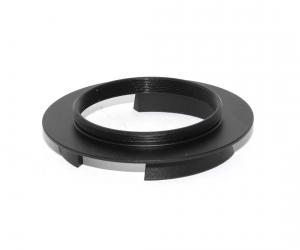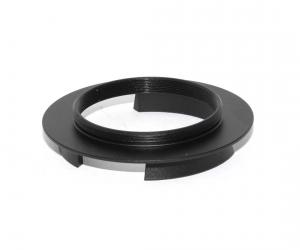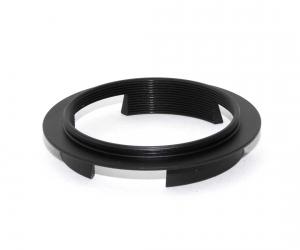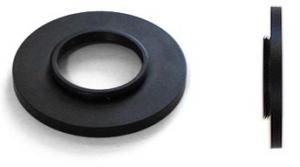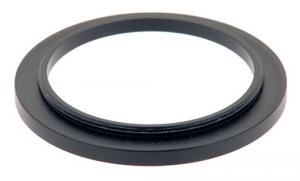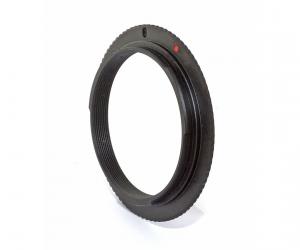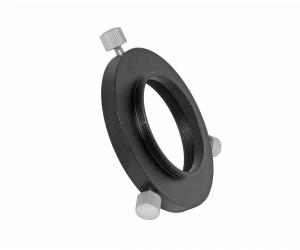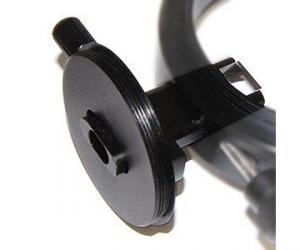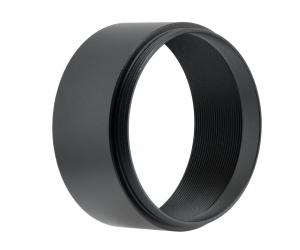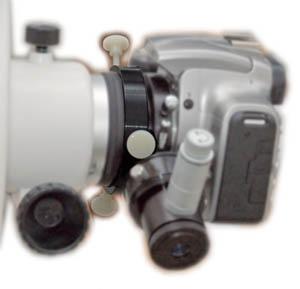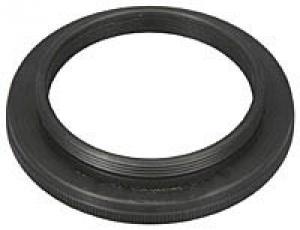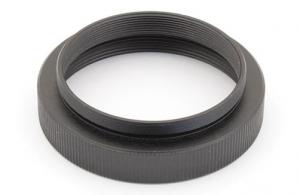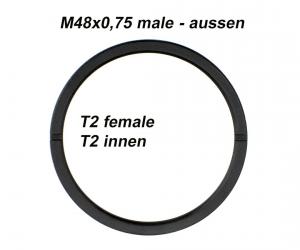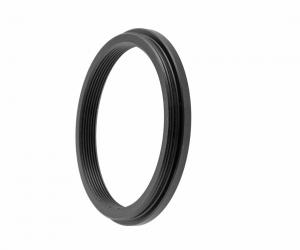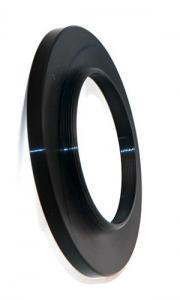- Telescopes
- Overview:
Telescopes - Achromatic Refractor
- Apochromatic Refractor
- Overview:
Apochromatic Refractor - ED Refractor - less color aberration than an achromatic
- SD APO - color free 2-element APO objective
- EDT APO - 3 element ED objective
- High End APO with 3-element APO objective - no color aberation
- Flatfield APO with flat field for Astrophotography
- All Apos and EDs from all manufacturers - large overview
- TS APO and ED from Japan with high quality optics
- Overview:
- Newtonian Telescopes
- Dobsonian Telescopes
- RC Ritchey Chretien Telescopes
- Casssegrain Telescopes
- Reflektor Telescopce with Lens Correcture
- Maksutov Cassegrain Telescopes
- GoTo Telescopes
- Solar Telescopes H-Alpha
- Overview:
- Mounts Tripods Rings Rails Power Supply ...
- Overview:
Mounts Tripods Rings Rails Power Supply ... - Mounts Equatorial with GoTo
- Mounts Equatorial without GoTo
- Mounts Azimutal with GoTo
- Mounts Azimutal without GoTo
- Mounts GoTo - Harmonic Drive
- Travel mounts for astro imaging
- Tripods Piers Polar Wedges
- Mount Control & Electronics
- Dovetail Clamps, Plates and Mount Adapters
- Tube Rings
- Power Supply
- Counterweights Balance Weights
- Mount Accessories - Other
- Overview:
- Telescope Accessories
- Overview:
Telescope Accessories - Eyepieces
- Barlows & Reducer Lenses
- Diagonal Mirrors and Prisms
- Binocular Viewers
- Finder Scopes
- Telescope Collimation and Test
- Cleaning Tools
- Transport and Storage
- Dust protection for Telescopes & Accessories
- Stray Light Protection
- Dewcaps and Heater
- Focusers, Adapters, Motorfocus
- Telescope DIY & Improvement
- Other telescope accessories
- Replacement Parts
- Overview:
- Filters
- Overview:
Filters - Color Filters and Color Filtersets
- Nebular Filters for Visual Observing
- Neutral-Density and Polfilter
- Photo Narrowband Nebular Filters
- Photo Broadband Filters
- Photo Planetary Filters
- Photo R-G-B and IR Cut Filters
- Photo - Filtersets
- Photometric Filters
- Clip Filter for DSLR Cameras
- Filter Wheels and Filterslider
- Solar Filters for white light
- Solarfilter for H-Alpha and Calcium
- Overview:
- Adaptors
- Overview:
Adaptors - Adapter 1,25" and 24,5mm
- Adapter 2"
- Adapter T2 - M42x0.75
- Adapter M48x0,75
- Adapter M54
- Adapter SC
- Adapter M63
- Adapter M68
- Adapter to other Threads
- Adapter Extensions
- Adapter camera bayonet
- Adapter Objective Filterthread
- Adapter Quick Changing , Rotation
- Adapter Eyepiece Projection
- Adapters Tilting
- Overview:
- Astrophotography and Photography
- Overview:
Astrophotography and Photography - Cooled Cameras
- Cameras without Cooling
- Deep-Sky Cameras uncooled
- Set-Offers Camera, Filter, Wheels
- Acessories for Cameras
- Travel mounts for astro imaging
- Imaging Correctors for Telescopes
- Autoguiding Cameras & Sets
- Everything for Guiding
- Focusing aids - Bahtinov mascs
- Flat Field foils and boxes
- Lenses for Cameras
- Piggyback Camera Holder
- Camera Bags, Photocases & more
- Digital Camera and Smartphone Adapter
- Other photo accessories
- Overview:
- Binoculars, Spotting Scopes, Microscopes, Range Finders
- Overview:
Binoculars, Spotting Scopes, Microscopes, Range Finders - Roof Prism Binoculars
- Binoculars with Porro prisms
- Binoculars from 100mm Aperture
- Binoculars with 1,25 inch eyepieces
- TSMX APO Binoculars
- Binoculars for Astronomy
- Binoculars Hiking Bird watching
- Monoculars - Opera Binoculars
- Accessories for Binoculars
- Spotting Scopes
- Range Finders
- Microscopy
- Bags for Phototripods & Binoculars
- Overview:
- Phototripods and Binomounts
- Books, Software
- Overview:
Books, Software - Books for Astronomy Beginners
- Star Charts and Planispheres
- Books about our Solar System
- Observing Tips for Amateurs
- Popular Astronomy Literature
- Teaching material
- Astrophotography books
- Telescopes, Observatories, Construction
- Calendars Yearbooks
- Software, Star Charts
- Books for Microscopers
- Books Nature and Animals
- Nature Photography TimeLapse
- Overview:
- Night Vision, Magnifiers, Weather, Domes & more
- Beginner Astronomy and Gift Ideas
- Second Hand & Special Offers
- New products
Manufacturer: -TS Zubehör
Product number: TSOAG9G2
EUR119.00new
EUR 119,00RRP EUR 159,00you save 25.2% (EUR 40,00)
incl. 19 % VAT (DE)
The VAT indicated refers to that applicable in Germany. After logging in, the VAT amount is adjusted to the applicable VAT of the stored delivery country. Therefore, the final price may vary accordingly.
excl. 6.95 € shipping costs (DE)
more details to the shipping costs ...Please log in to calculate shipping costs to your country.
rating: 4.5 of 5TS-Optics Off-Axis Guider TSOAG9 - Length only 9 mm4
- Details..
- Technical data..
- In the box..
- Reviews..
- Download..
- Manufacturer infos..
- Safety informations..
TS Optics TSOAG9 ultrashort off-axis guider for astrophotography
The short TSOAG9 off-axis guider is a development from Teleskop Service. It can be used with almost every telescope and substitutes the guiding scope. Guiding becomes more accurate and the mount has to bear less load. The TSOAG9 is the shortest off-axis guider of its class - especially suitable for adaptions where only little space is available. Nevertheless, the TSOAG9 offers convincing features.The advantages and features of the TSOAG9:
Connecting the TSOAG9 to the telescope or the corrector:
At the telescope side, the TSOAG9 has a short 2" barrel with an M48x0.75 / 2" filter thread. This allows for a flexible adaption. Connection to a 2" receptacle ... With the 2" extension ring TSVF230, you can attach the TSOAG9 to any 2" receptacles.
Connection to a 2" receptacle ... With the 2" extension ring TSVF230, you can attach the TSOAG9 to any 2" receptacles.Connection to correctors with T2 or M48 thread ... The TSOAG9 can directly be attached to correctors or reducers with M48 connection. The adapter TST2-M48s or TST2-M48L allows for attaching to correctors with T2 connection.
TSOAG9 to the Baader MPCC Coma Corrector ... The TSOAG9 fits directly to the M48 connecting thread of the correctors (Image at left). The combination offers coma correction and guiding in a very small space. From the camera connecting adapter of the off-axis guider to the sensor, you have 46.6 mm left - enough space even for a DSLR camera.
More connection types ...
TeleVue correctors via the adapter TSTV-M48a
Vixen field correctors for VMC, VC and APOs via the adapter TSViRed-M48
M68x1 ZEISS level correctors via the adapter M68I-M48A
How to adapt the imaging camara to the TSOAG9:
For a suitable camera connection, you need the optional connecting adapter. The adapters are made for the TSOAG9 and match perfectly.
The adapters are conical, always ensuring the optimal position. At the same time, you can take down the camera without unscrewing it.
TSOAG9G2 - Mounting on cameras with protruding flash housing
The knurled screws of the TSOAG9 collide with the flash housing. If you still want to use the Off-Axis-Guider on a DSLR with a protruding flash housing, we recommend short M4 screws or grub screws. Alternatively we recommend the TSOAG9EOS for Canon EOS cameras.| Telescope side connection: | 2" barrel and female M48x0.75 thread length 2.5 mm |
| Path from camera adapter to the 2" barrel: | 9 mm - shortest length |
| Path from camera adapter to the M48x0.75 thread at the telescope side: | 11.4 mm - the length of the female M48 thread is 2.5 mm |
| Camera side connection: | Quick coupling with three screws - diameter 51 mm - fits to connecting adapter |
| Lateral connector for autoguider or guiding crosshair eyepiece: | T2 (M42x0.75) - adjustable distance to prism |
| Clear aperture: | D=45.6 mm |
| Dimensions of the prism: | 8 mm x 6 mm x 6 mm |
| Distance from the middle of the prism to the lateral T2 connection: | 26 mm to 38 mm adjustable |
| Distance from the middle of the prism to the front side of the TSOAG9: | 6.7 mm |
| Distance from the middle of the prism to the camera side of the TSOAG9: | 4.5 mm |
Instructions - Focusing the autoguider or crosshair eyepiece
 First, the camera is focused. A coarse determination with a ruler makes sense, the distances were measured from the prism. The single adjustment can also be done at day, on a church spire, but also at night on a star.
First, the camera is focused. A coarse determination with a ruler makes sense, the distances were measured from the prism. The single adjustment can also be done at day, on a church spire, but also at night on a star.Then, the crosshair eyepiece or the autoguider is attached and focused by shifting the T2 adapter. The focuser is not used here.
Instructions - adjusting the prism optimal to the camera sensor
 The optimal position of the small prism is just outside of the camera sensor, then you have the best illumination possible and avoid shading by the prism. Within this range, you can shift the prism as you want for increasing the area used for searching a guide star.
The optimal position of the small prism is just outside of the camera sensor, then you have the best illumination possible and avoid shading by the prism. Within this range, you can shift the prism as you want for increasing the area used for searching a guide star.However, modern high-sensitive autoguiders always offer enough guide stars, making the adjustment of the prism, common in former times, unnecessary. Therefore, a single optimisation is sufficient.
Installation and operating instructions
The installation and operating instructions can be found under the following link: Instructions| Manufacturer / Importeur: | Teleskop-Service Ransburg GmbH |
| Street: | Von-Myra-Str. 8 |
| ZIP / City: | 85599 Parsdorf |
| Country: | Germany |
| Telefon number: | +49 89 99228750 |
| Email: | info@teleskop-service.de |
| Website: | www.teleskop-express.de |
Safety informations: PDF Download
Recommended accessories
Adaptors
TS-Optics adapter reduction from T2 to 1.25" - additional T2 thread - short
EUR 29,90RRP EUR 34,00you save 12.1% (EUR 4,10)
Customers who bought this product also bought...
General Accessories
Reviews
Written by Peter Bührle
on 2025-04-30
"Wie immer, alles bestens."
Written by Jarod Rosenthal
on 2025-03-07
"Would recommend, good quality product. It works well for me. "
Written by Dirk Bartelt
on 2022-09-13
"Die Baulänge ist wirklich kurz, Verarbeitung gut. Es läßt sich alles gut verschieben und einstellen. Nur sollte die Nachführkamera bei Verwendung Spiegelreflexkamera und T-2-Anschlußring einen möglichst kleinen Backfokus haben. Auch ist das Preis-Leistungsverhältnis sehr gut."
Written by Aleksandr Eremin
on 2021-09-15
"Perfect quality short off-axis guide, very useful for DLSR cameras or lots of additional astro accessories like filter wheels and so on."
Written by Tom Alderweireldt
on 2021-05-03
"I would recommend it, but you should advertise the required adapters to connect it to T2-clamps. It is useless without connecting rings. "
Written by Sebastian Niklaus
on 2021-02-25
"Funktioniert sehr gut. Es gibt einen Rotationsbereich, in denen nur zwei der drei Halterungsschrauben den austauschbaren Anschluss fixieren. Für den Anfang wäre eine kleine Bedienungsanleitung hilfreich gewesen. Auch Informationen zur möglichen Reinigung des Prismas wären hier interessant. Das Prisma war durch den Transport wohl leicht verrutscht, kann aber einfach in Position gebracht werden. "
Written by Dominique Boutigny
on 2018-05-22
"The advantage of this OAG is to be very slim and to be compatible with optical corrector requiring a short distance to the CCD. Nevertheless it is difficult to adjust the position of the guiding camera, a stronger fixture with a precisely adjusting ring would be useful."
















